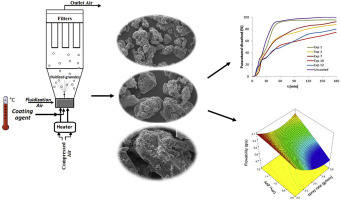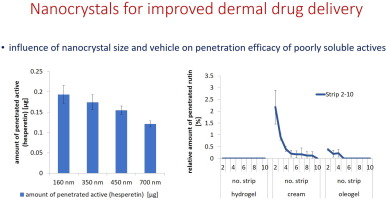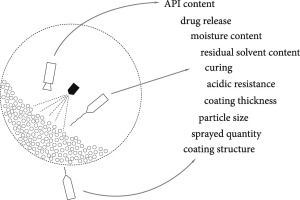- Home
- Blog
- News
- Basics
- Sources
- Agencies, Regulatory & Organisations
- CERSI Excipients Browser
- Excipient Report
- Excipient DMF List
- EXCiPACT Certified Companies
- Excipient Documentation
- Excipient EINECS Numbers
- Excipient E-Numbers
- FDA Inactive Ingredient List
- FDA GRAS Substances (SCOGS) Database
- IPEC Americas
- USP - U.S. Pharmacopeia
- Definitions
- Whitepapers / Publications
- Supplier
- Services
- Media
- Events
- 1st pharmaexcipients Poster Award
- Event Calendar
- Events featured by pharma-excipients
- 4th Annual Formulation & Drug Delivery Congress
- DDF Summit
- ExcipientFest Americas
- ExcipientFest Asia
- Global CompliancePanel
- International Conference and Exhibition on Pharmaceutics & Novel Drug Delivery Systems
- Formulation & Drug Delivery USA Congress
- Laboratory Medicine 2018
- Making Pharmaceuticals Europe
- Making Pharmaceuticals Exhibition
- Pharma Integrates
- PharmaExcipients China @CPhI China
- TTC Technology Training Center
- Jobs
- Online Sourcing
- Contact
01. October 2018
In this study, a set of 24 experiments was designed to understand the combined effect of different process parameters, i.e. material feed rate, liquid-to-solid (L/S) ratio, screw speed, and screw configuration on the residence time distribution, granule morphology, and particle size distribution in twin screw wet granulation of microcrystalline cellulose. It was shown that residence times were longer at higher L/S and lower screw speeds. However, the most dominant effect on mean residence time...
26. May 2018
Hot-melt coating is a novel and cost-effective solvent-free coating technique. Commonly used excipients for hot-melt coating are lipid substances. In this work, modified fluidized-bed system was applied for coating, and additional components were used to melt and convey the excipient to the fluidized-bed apparatus. Granules containing 20% (w/w) paracetamol were coated with Precirol® ATO 5 at 9.1% (w/w) coating level. The aims of this study were to define a relationship between the three...
15. May 2018
This study investigates the extent of drug (active) migration in granules made via high shear wet granulation subject to factors such as the viscosity of the binder solution, particle size of the excipient and granule porosity. Due to the complexity of a qualitative comparison between granules having different sizes, shape and porosities, a quantification technique that is independent of these differences was developed. The radial distribution function (RDF), developed as part of this effort,...
11. May 2018
Improve Compliance by Optimizing the Taste of Active Compounds Dietary supplements for athletes and balanced additives for all age groups must, above all, possess one property: they have to taste good. Consumer acceptance is essential for long-term use and thus for the desired, positive effect on performance and health. However, many active substances do not taste nice. Their tastes range from sulphurous to fishy to astringent and bitter. Alpha-lipoic acid, caffeine or resveratrol are just a...
25. April 2018
Nanocrystals are composed of 100% active and possess an increased aqueous solubility and dissolution velocity when compared to larger sized materials. Nanocrystals can be used to improve the bioavailability of poorly soluble actives not only for oral, but also for topical application. In this study nanocrystals of different sizes were produced and the influence of size on dermal penetration was investigated. The influence of different excipients and vehicles on the penetration efficacy upon...
18. October 2017
The development of self-nanoemulsifying drug delivery systems (SNEDDS) to enhance the oral bioavailability of lipophilic drugs, is usually based on traditional one-factor-at-a-time approaches.
14. October 2017
Over the last two decades, regulatory agencies have demanded better understanding of pharmaceutical products and processes by implementing new technological approaches, such as process analytical technology (PAT). Process analysers present a key PAT tool, which enables effective process monitoring, and thus improved process control of medicinal product manufacturing. Process analysers applicable in pharmaceutical coating unit operations are comprehensibly described in the present article. The...
24. September 2017
Abstract Thermoresponsive polymers are a class of smart materials that exhibit change in their physical properties with temperature, which make them unique and useful materials in a wide range of biomedical applications. Soluplus®, a thermoresponsive block graft copolymer with poly(vinyl acetate) PVAc and poly(vinyl caprolactam) PVCL block grafted on a poly(ethelyne glycol) PEG backbone in a ratio of 30:57:13 respectively, is marketed by BASF Corporation, it aids in solubilizing and increasing...
20. February 2017
Abstract Adsorption of lipid-based formulations, which are usually liquid, onto silicas has been extensively investigated in the past decade to convert them into solid dosage forms. There are conflicting reports on the ability of commercially available porous silicas, like Neusilin® US2, to release lipid formulations completely, especially after long-term storage. In this study, the release of a model drug, probucol, from different formulations of medium chain lipids and a surfactant,...
17. November 2016
Abstract This study aimed to apply quality risk management based on the The International Conference on Harmonisation guideline Q9 for the early development stage of hot melt coated multiparticulate systems for oral administration. N-acetylcysteine crystals were coated with a formulation composing tripalmitin and polysorbate 65. The critical quality attributes (CQAs) were initially prioritized using failure mode and effects analysis. The CQAs of the coated material were defined as particle...







